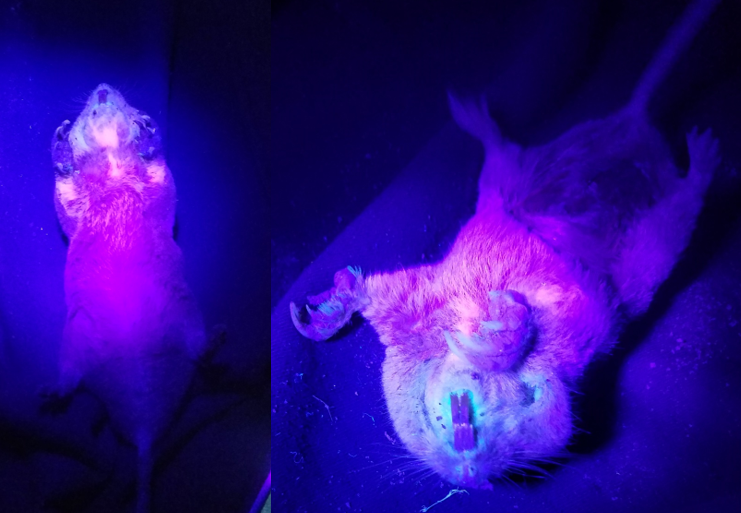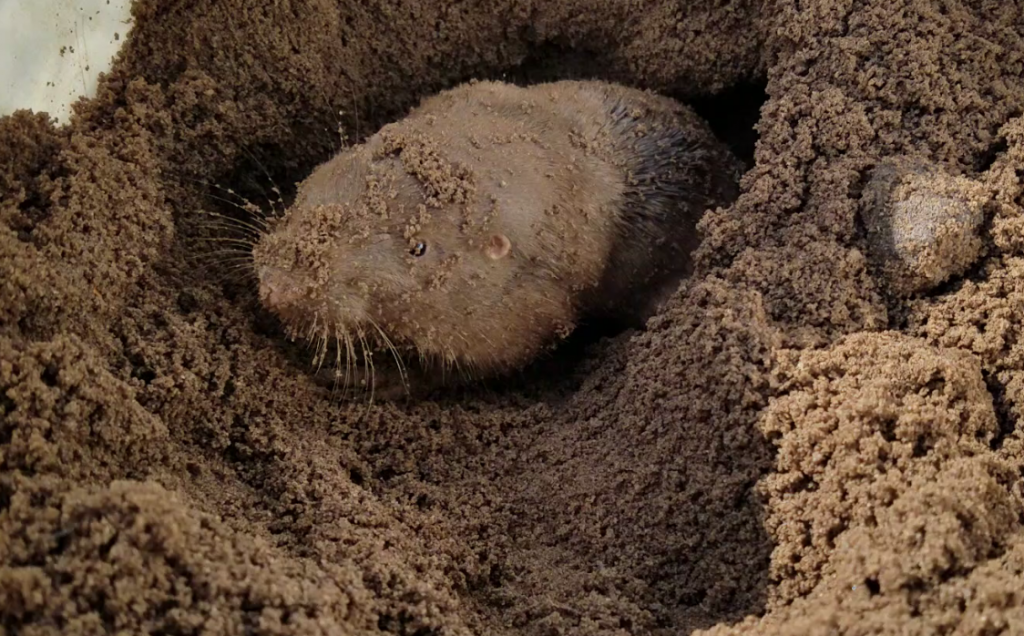Southeastern pocket gophers glow, but no one knows why

A sedated Southeastern pocket gopher fluorescing under black light. After learning about other glowing mammals, biologist JT Pynne decided to turn the UV flashlight on his specialty, pocket gophers.
Courtesy of JT Pynne
Southeastern pocket gophers have a strange secret, only recently uncovered by scientists: They glow.
The burrowing rodents spend most of their lives underground in the tunnels they dig in South Georgia and neighboring states.
But stick one under a blacklight, and it lights up.
“It’s kind of an indescribable blend of purple and blue and pink,” said JT Pynne, who made the discovery when he was studying pocket gophers for his PhD at the University of Georgia. “It’s very, very psychedelic.”
In the past couple of years, researchers have found a handful of mammals that fluoresce under UV lights. Flying squirrels, wombats and platypuses light up in vibrant pinks, blues and greens. An earlier study from the 1980s had found that opossums glow.
Pynne, after reading about the flying squirrels, decided to check animals he had access to as part of his research, including his specialty, the Southeastern pocket gophers, and other related species. His paper describing the glowing gophers was recently published in the scientific journal, The American Midland Naturalist.
“It was my crazy little pocket gophers, of course,” he said. “They’re so weird to begin with.”
Southeastern pocket gophers almost never come up from underground, Pynne said. But they play an important ecological role in the forests where they live, aerating soil underground, supporting a diversity of plants and providing homes for other animals that use their tunnels.
Though small, they’re also fierce. Another scientist referred to the pocket gopher as a “homely, belligerent sausage.”
“They’re pound for pound some of the most ferocious animals I’ve ever come across in my life,” Pynne said. “I’ve always described them as really angry russet potatoes. But now they’re really angry russet potatoes that glow.”

Pynne doesn’t know why the gophers glow, though.
He said it could be diet-related. It may have evolved as some form of communication among gophers, or as camouflage from predators. Or, there could be no reason for it.
“It’s possible that it doesn’t mean anything,” said Allie Kohler, a grad student at Colorado State University.
When she was an undergraduate at Northland College in Wisconsin, Kohler was one of the people who discovered that flying squirrels fluoresce hot pink under blacklights.
She said she’s enjoyed seeing subsequent glowing mammal discoveries since then.
“It shows that there’s so much that’s still out there left to discover, and who knows what could be hiding right in front of us,” she said.
Some plants, birds, arthropods, amphibians and fish are known to glow, too.
Leo Smith, a professor at the University of Kansas who’s studied evolution and biofluorescence, said it’s easier to imagine why animals would glow underwater, where blue and green light travels farther than warmer colors. So biofluorescent underwater creatures absorb that cooler-colored light, and re-emit it in warmer colors.
“It’s harder to figure out why they would do it on land,” he said.
But the more biofluorescent mammals that are discovered, the easier it may be for scientists to find a pattern among them, and to narrow in on a reason behind the glow — if there is one. For instance, almost all the mammals that have turned up glowing so far are nocturnal or live in low-light conditions.
Pynne, who’s now a biologist at the Georgia Wildlife Federation, said more glowing mammal discoveries could also just open up even more questions. But he’s happy that his beloved pocket gophers are part of the fluorescent club.
It’s unlikely for a person to casually come across a Southeastern pocket gopher, and, given their ferocity, not recommended. But Pynne said UV flashlights are easy to find and inexpensive, and there are probably more glowing mammals out there, just waiting to be found.








